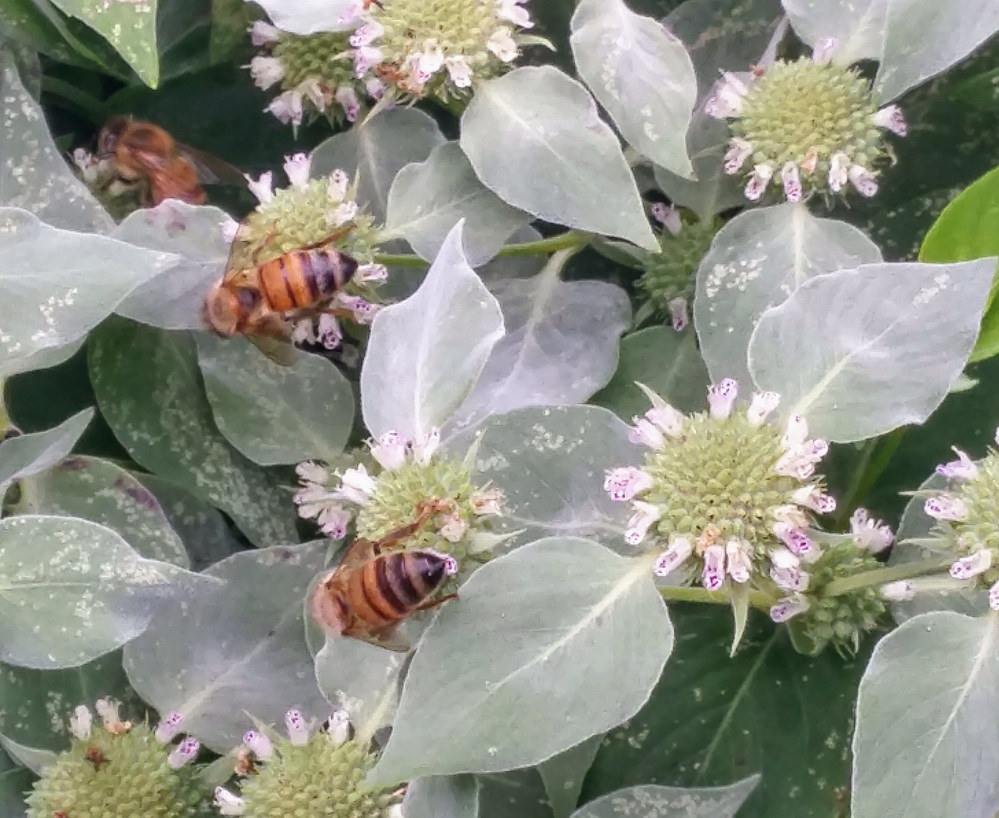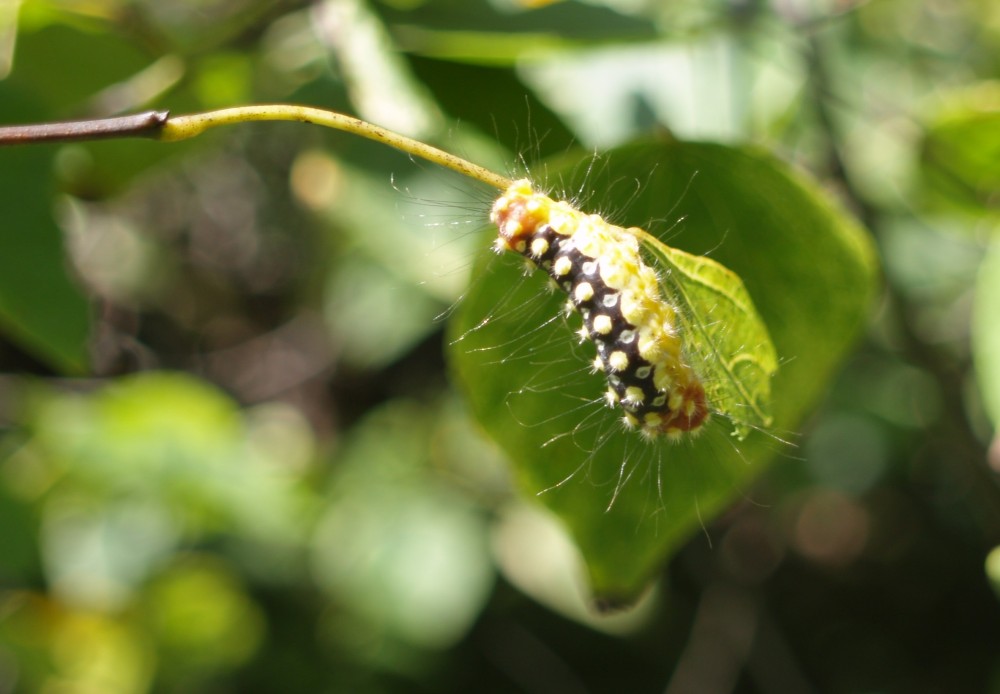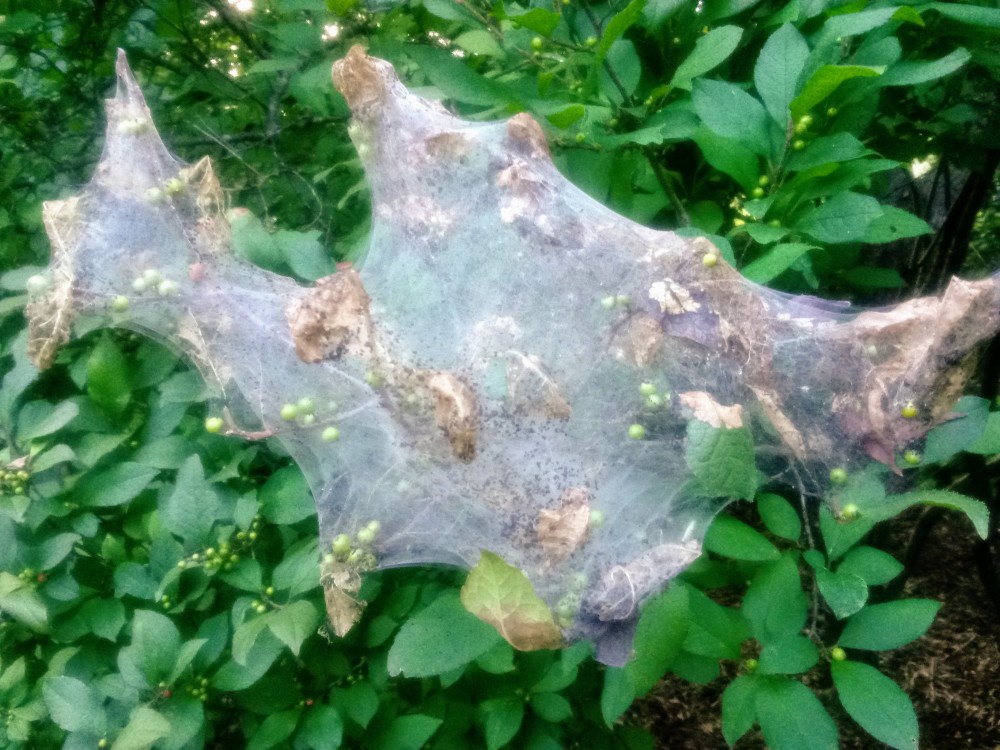I figure that I’m of average intelligence, though certainly my wife will have a thing or two to say about this, but often it seems there are fewer answered than unanswered questions here in the garden. Why is it, I wonder, that a year ago there were many dozens of Tiger swallowtails, and this year there are few in the garden? There are just as many flowers that are favored by butterflies, probably more with abundant seedlings of Joe Pye weeds that are in bloom, and several others that I’ve planted.
No pesticides are used in this garden, ever, or at least none in the past twenty years, so I must presume that the explanation is natural cycles, and next year they’ll be back. This is not the first time that swallowtails have been in short numbers, but sometimes it’s honeybees or bumblebees that come up missing. A year or two, dragonflies seemed fewer darting above the koi pond. This year, the number of bees is astonishing.
I’ve been corrected by a reader that ones I presumed to be bumblebees are actually carpenter bees, but this year and most years these are seen in abundance, and with Mountain mint flowering over the past several weeks and Winterberry hollies before that, the number of other bees in the garden seems substantially increased over recent years. By doing nothing new on my part. 
Probably, there’s someone out there who’s able to explain these things, but for now I’ll just accept that this is a completely natural cycle, and there’s little or nothing I can do to change it. Don’t tell me to plant more of anything, or something different. That’s not the problem.
I’ve noted the lack of caterpillars on redbuds this summer. I don’t recall exactly, but it was last year or maybe the year before that I was stung by caterpillars as I brushed against low hanging branches to pull a weed. I researched to find out the name of this particular stinging caterpillar (White Flannel moth, below) since I don’t think that tent caterpillars in general are stinging types, but after seeing them on the redbuds in consecutive years, this year there are none. Certainly, this is not due to anything I did since I let the caterpillars do their thing, which defoliated about half of the large redbuds before they moved on to the next cycle in their life. I’ve always figured that part of the cycle would be to lay eggs on branches or in the ground below the host tree that would be next year’s, but that’s been skipped over this year. I can’t explain. 
There are now tent caterpillars on one of the Winterberry hollies (below) that are in the same vicinity as the redbuds, but the caterpillars are too small to tell if they’re the same stinging ones. Again, I’ve no plans to pull the tents out of the hollies, which is the friendliest way to be rid of these rather than spraying something to kill them that might be a problem for something else. Today, there are lots of tiny caterpillars, and not much foliage as been damaged, but that will start soon. Why let the caterpillars eat the hollies’ leaves?
The deciduous hollies will start into dormancy in another month or so, and other than looking at the caterpillar-ravaged shrub, this is not really a problem as far as the hollies’ well being. I don’t think the caterpillars will bother the nice crop of berries, so why not let them live? Without identifying the caterpillars, I don’t know what kind of moth or butterfly these will turn into, but whatever they are, they’re welcome in this garden.
Dave, I often wonder the same thing about fewer numbers of different beautiful insects/creatures over different years, but I don’t know the answer why either. I do know that I applaud you and your wife for your lovely garden and respect for the flora and fauna of our beautiful planet. Another lovely blog…thank you! 😊
I am not as friendly towards whatever is making the web-like thing in your last picture. We have gotten them in our fruit trees on occasion and have cut out any and all of them and disposed of them into a bag and off the property. I too do not like to spray, but an extension agent told me that they will damage any fruit trees you have.
I am friendly when I know that damage is minimal. Worms defoliate the catalpa annually, but I know that it will grow new leaves. Also, I suppose that when the tree grows larger worms will not get every leaf. With a short term vegetable or fruit crop some action must be taken.
And I seem to see more Tiger Swallowtails here (West central New Jersey) than last year. And way fewer Japanese Beetles. I don’t know why.
Happily, I report many fewer Japanese beetles this summer, though they are never abundant in this garden. I attribute this to birds, but really don’t know.
The Japanese beetles totally missed my NE Alabama garden this year, though I am wary about stating this being fearful that they will suddenly show up in droves. I don’t know why but I’m very grateful.